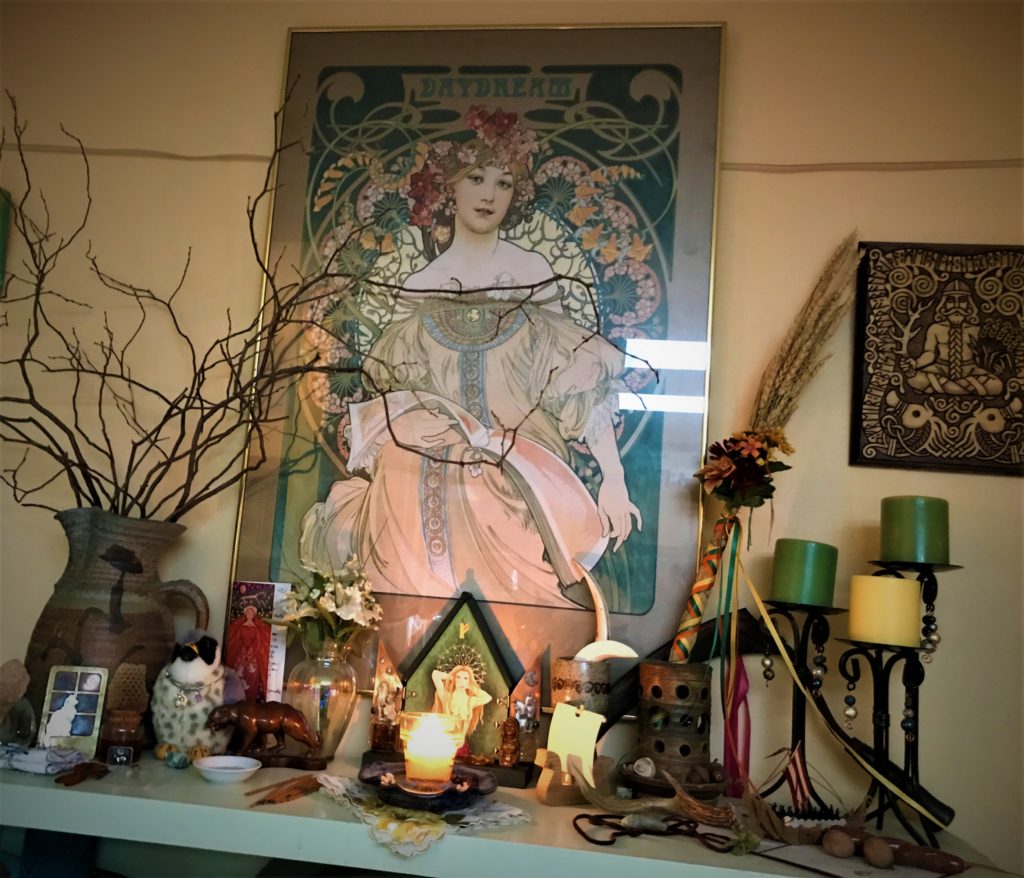
As a Northern Tradition shaman, altar work is a significant part of my personal practice. In my tradition, we joke – somewhat tongue in cheek – that altars spring up in our homes like mushrooms. An altar serves as a place to honor and revere one’s Holy Powers: the Gods, Spirits or Vaettir, and Ancestors. It may be an elaborate construction with votive images or figures, candles and offerings or something as simple as a small candy tin lined in felt housing something symbolizing the Spirit of note. While the former is clearly stationary, the latter can accompany one in a purse or backpack. Many spiritual traditions include the establishing and maintaining of altars which serve as places to encounter and honor the Divine. It can also be noted that the line between a shrine and an altar is somewhat blurry.
At TwoTrees, we have many altars, both in and out of doors. On the land, they are of stone, and in the Norse tradition, we refer to them as ‘harrows’. There we offer prayers and celebrate blóts (rituals offering spirits, milk, fruit and grain.) Indoors, with the exception of our bedroom and the baths, every room has altars or shrines. Some are dedicated to specific deities, such as the elaborate altar to my lady Freyja and her brother Frey which tops a large cabinet in the heart of the house. Here I burn beeswax candles, fat and fragrant, and offer My Lady honey from our hives as I pray and sing to Her.
Another example is the altar to the Duergar, the Dwarves of the Northern Tradition, who are the Master Makers and important patrons for my husband (a blacksmith) and myself (a goldsmith). Their altar bears miniature smith’s tools, images and a dish for the offering of the good Scotch They love.
Also significant is my Ancestor altar, with its photos of departed Loved Ones and numerous small objects evoking them or cherished by them, ranging from a locket of my mother’s hair to my late father’s harmonica. I often sit before it to share news of the family, to talk through challenging situations and to remind my Dead that They are honored and not forgotten.
In the time I engage with my altars, whether through prayer or simply sitting quietly and reverently before them, I experience a sense of deep connection and peace, of right relationship, of affirmation that this tradition to which I was called is where I belong.
To create an altar is also to take on a responsibility: to clean and maintain it regularly, to replace candles and refresh offerings. It’s a point of relationship with the Gods and Spirits and like any relationship, requires the investment of time and energy. Offerings are refreshed or replaced depending on what they are: some are replenished weekly, others sit out only overnight. I hand-launder altar cloths quarterly, and use that occasion to dust and reset my altars, allowing the objects to guide me in their placement. This practice has led to a vibrant and meaningful relationship with the Holy Powers Whom I revere and become a profoundly meaningful part of my personal spiritual practice.